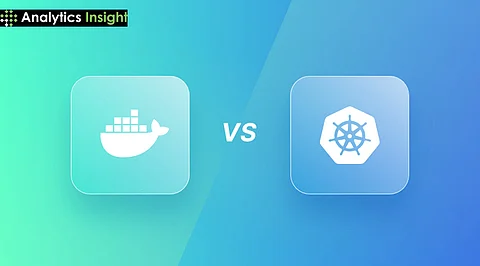

Containerization has reshaped the way applications are deployed and managed, but with multiple administration tools available, choosing the right one can be overwhelming. Kubernetes and Docker Swarm are two of the most popular container administration tools, each with its own strengths and weaknesses. Let’s take a detailed look at the key differences between these two container orchestration giants, helping you decide which one to use.
Before comparing, it is important to understand what container orchestration means. Container orchestration is the management of containerized applications across a cluster of machines.
Kubernetes, also known as K8s, is an open-source platform developed by Google. Its popularity has increased because of its robust features and its scalability. Kubernetes is an ideal solution to manage complex applications running in containers, which is why it perfectly suits large-scale deployments. Self-healing is one of the great features of Kubernetes. If a container crashes or does not respond, Kubernetes will automatically restart or replace it with a new instance. This gives high availability and minimal downtime to the applications.
Besides that, Kubernetes provides more advanced networking features with service discovery. It makes the containers talk to each other regardless of their location in the cluster. Further, it enables scaling up and down applications as per the demand requirement using powerful tools.
Docker Swarm is the native clustering tool for Docker containers. It simplifies the deployment and management of containers across multiple machines. Although Docker Swarm does not support some of the more advanced features offered by Kubernetes, it is one of the simplest to use.
The greatest advantage of Docker Swarm is that it can be easily configured. All one needs is just a few commands issued to form a swarm cluster within seconds, and this will be useful to small projects or small teams in terms of quicker deployment with fewer configurations.
Besides, Docker Swarm supports the feature for load balancing and service discovery. However, its capabilities are less comparable to those of Kubernetes, as Docker Swarm may not support capabilities for more than fundamental scaling without providing the level of automation or even self-healing found in the case of Kubernetes.
Complexity: Kubernetes is more complex than Docker Swarm as it contains many features. Although more flexible and scalable than Docker Swarm, Kubernetes is pretty complex for beginners to get familiar with. Meanwhile, Docker Swarm is relatively easier to set up and manage; it is perfect for someone who wants something simple.
Scalability: Kubernetes does a great job managing large applications with thousands of containers spread across machines. Its smart scheduling and resource management features help it use resources well based on what is needed. Docker Swarm can also scale applications but might not manage such high-demand situations as well.
Community and Ecosystem: Kubernetes has a larger community and ecosystem than Docker Swarm. This also means there are more resources for learning, such as documentation, tutorials, and tools created by others. This active community support can be invaluable for developers who want to learn more about container orchestration.
Use Cases: Many situations involve choosing between Kubernetes or Docker Swarm. For most complex applications with high availability and the ability to scale quickly, Kubernetes will be the go-to choice. For a small team or a project that wants to deploy rapidly, Docker Swarm would be an ideal choice.
It will depend on the needs of the individual and the project's requirements, so it will have to choose between Kubernetes and Docker Swarm. If a person wants to use a tool that can deal with complex applications at scale, probably learning Kubernetes is the best choice because of its powerful features and the robust community behind it, making Kubernetes an industry standard in container orchestration.
It is an attractive alternative for teams that require simplicity and ease of use in deploying containerized applications quickly. Its straightforward setup process lets developers focus on building applications rather than managing infrastructure.
In a nutshell, Kubernetes and Docker Swarm are both incredibly valuable capabilities in the container orchestration space. Given their specific goals and projects in this ever-evolving software development landscape, understanding their strengths and weaknesses can guide developers on which tool to learn.
